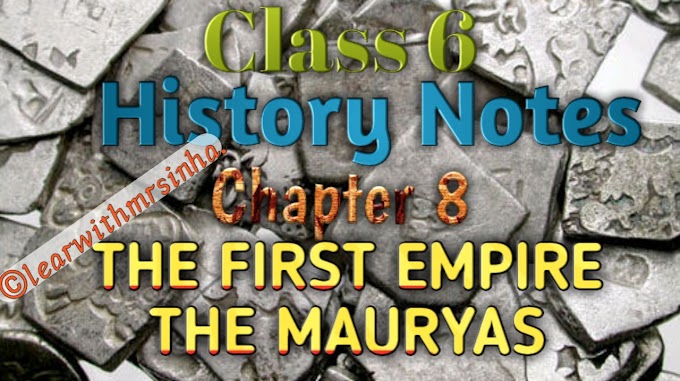Matter and its Nature
Matter :- Anything that occupies space and have mass is called matter.
Volume :- The space matter or anything occupies is called its
volume.
Mass :- The amount of matter anything contains is called its mass.
Energy :- Anything that is not matter but has the capacity to do
work is energy.
Ex.- Light, heat,
electric, sound etc.
Classification of Matter (State)
Solid :- A solid has a
fixed volume and a definite shape.
Liquid :- A liquid has a
fixed volume but not a definite shape.
Gas :- A gas has neither a
fixed volume nor a definite shape.
Inter conversion of State
The
change in the state of matter from one to another is called inter conversion of state.
Melting
:- The change in the state from solid
to liquid is known as melting. (Solid – Liquid)
Melting
Point :- The temperature at which
solid melts.
Ex.-
Melting point of :-
Ice - 0°C
Carbon - 3500°C
Aluminium - 660°C
Iron - 1540°C
Freezing
:- The change in the state from liquid to solid.
Freezing
Point :- The temperature at which liquid changes into
corresponding solid.
Note
:- The freezing point of a liquid is the same as
the melting point of the corresponding solid. Thus, the Freezing point of water
and melting point of ice is 0°C
Boiling
:- The
phenomenon of making bubbles in a liquid
after heating to a particular temperature.
Boiling
Point :- The temperature at which liquid starts
boiling.
Ex.-
Boiling point of :-
Water - 100°C
Acetone - 56°C
Ethyl Alcohol - 78°C
Glycerine - 290°C
Condensation
:- The phenomenon of changing a matter from
gaseous state to liquid is called condensation or liquefaction.
Vapour
:- The substances that ordinarily exist in the
solid or liquid state are called vapour in the vapour state. (Evaporate)
Ex.-
Sulphur
Vapour (Solid)
Water
Vapour (Liquid)
Sublimation
:- The phenomenon of changing solid directly into
gas without melting into liquid.
Ex.- Naphthalene, Camphor
Sorting Materials into Groups Class 6
Classification of Matter or
Substances (Composition)
Pure Substances
Pure Substances:- A substance
contains single substance is known as pure substance.
Element :- An element is a
substance which cannot be broken down into simper substances by chemical means
(chemical change).
Chemical
change and Physical change
Metal * :-
Properties:- Hard Solid
Metallic lustre (shining)
Ductile (can bent)
Malleable (can be beaten or
pressed into sheet)
Sonorous (give sound when heated)
Note :- In
metals Sodium (a soft solid) and Mercury (a liquid) are
exceptions which are not solid.
Non-metal :-
Properties:- Exists in all three states
Ex.- Solid (Sulphur, Phosphorus, Iodine)
Liquid
(Bromine)
Gaseous
(Hydrogen, Chlorine, Nitrogen)
Dull-looking
(no lustre)
Brittle
if solid (easily breakable)
Non-Sonorous
- All living things is mainly contain substance
called carbon.
- Chlorine used to kill germs in
water.
- Iodine is used to heal wounds
or sprains
- Sulphur is used to cure skin diseases
A compound is a substance that can
be split or broken down into simpler substances by chemical means.
Impure Substances (Mixtures)
Impure Substance :- An impure substance or mixtures
is a substance containing two or more substances (elements or compounds) in any
proportion.
Ex.- Air mixture
of gases, moisture (water) and Carbon dioxide (compound)
Natural
Water mixture of air and
water
Soft
drinks carbon dioxide, water, sweetening and flavoring
agents
Alloy:- A Metal mixed
with other metal or non metals.
Ex.- Steel (iron, carbon, manganese)
Brass (copper, zinc)
Bronze (copper & tin)
Homogeneous Substances :-
A substance is
homogeneous if the different parts of it have the same property (behaviour) and
composition.
(can mix easily but difficult to distinguish)
Ex.- All Elements (hydrogen, oxygen, gold) and
Compounds (salt, sugar, water),
Alloy (solid
solution), mixture of sugar and water
Heterogeneous Substances:-
A substance is heterogeneous if the different parts of it
differ in property and composition.
(Easily distinguishable if mixed)
Ex.- mixture
of sand and husk
Building block of matter
Molecule :- Matter is made up of extremely small
parts which can exist independently it is called molecules.
Ex.-
Atom :- Small
particle of a molecules is called atom. (not exist independently)
Note
:- A molecule of an element is
made up of one kind.
A
molecule of an compound is made up of two or more kinds / elements.
Ex.-
Fundamental or Subatomic
Particles
Atoms are further made up of small particles which is called fundamental
or subatomic particles. They are:-
1. Electrons 2. Protons 3. Neutrons
Charge :- Every fundamental particles have some
electrical properties which is called charge.
·
It occurs in two opposite form :- positive
(+ve) and negative (-ve). Same charges repel each other where as opposite chare
attract each other.
·
Properties of fundamentals or
subatomic particles
Electrons :- Very light particle
with negative electric charge
Protons:- Much heavier than electron
with positive electric charge
Neutrons:- As heavy as a proton
with no electric charge
·
At the center of the atom, there is a
nucleus, which consist of protons and neutrons (except the nucleus of hydrogen,
which has only a proton and no neutrons). And at a distance from the nucleus
there are electrons revolving round it
·
The nucleus is positively charged due to the
protons. But the same number of electrons (as protons) revolve round the
nucleus and balance the positive charge of the nucleus. So the atom is
electrically neutral.
I wish you enjoyied and learnt alot about Matter and its Nature notes CBSE class 6 chapter1 (Bharti Bhawan), NCERT Chapter 4 Notes Sortin Materials into Groups Class 6, Cass 6 Chapter 1 notes pdf. Please leave your valuable feedback.









2 Comments
Thanks for the notes it's really helpful to me.
ReplyDeleteTy
ReplyDelete